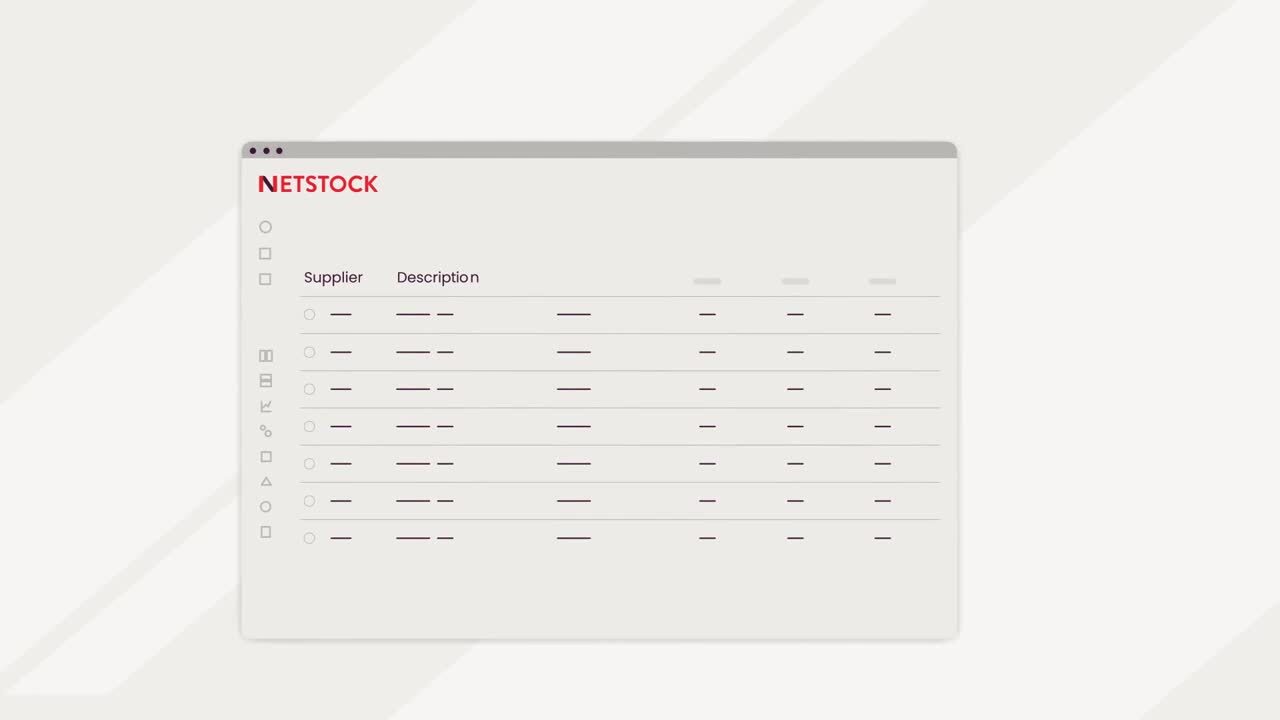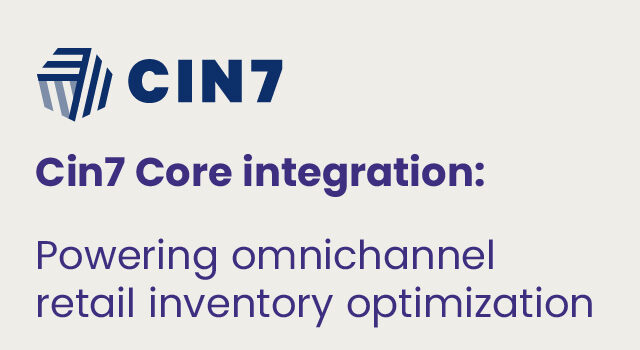What’s in this blog?
Inventory is the backbone of any supply chain business. It ensures smooth operations and keeps customers happy. It feeds turnover and profitability. Yet too much inventory also drives costs up. Businesses must maintain inventories at the lowest level to keep costs down. At the same time, they must have the products to sell when the customers want them. This is the perfect balance between too much and too little stock. Calculating the optimal inventory level is a key process component.
In this article, we’ll explain the principles and methods used to determine optimal stocks. By understanding and applying these principles, you can enhance your inventory turnover, improve customer satisfaction, and increase operational efficiency.
Importance of optimal stock
Optimal stock levels bring many benefits to the business. These include:
- Happy customers: Meeting customer demand is a primary objective for most businesses. Customer demand fully met helps the business maximize turnover and profits. Happy customers will trust the organization and return to buy again.
- Minimized holding costs: Inventory incurs costs. These include storage, insurance, and depreciation. Inventory also ties up capital, incurring interest costs. The capital is unavailable for other inventory investments so the business may miss investment opportunities.
- Increased operational efficiency: Optimal stock levels streamline operations by ensuring material and finished goods availability. Stock availability fuels smooth production and sales processes.
It isn’t difficult to see why businesses continually strive to optimize stocks, given the many advantages.
Optimal inventory level formula
Optimal inventory is the stock level where you have the right inventory to satisfy customer demand without carrying surplus stock. At this level, customers are happy, and revenue keeps coming in. Your stock turnover rate should be consistent because you replenish stock as you sell it. Optimal inventory levels depend on careful lead time safety stock management and accurate forecasts.
The optimal stock level is the sum of the optimal order quantity, the minimum stock quantity, and the safety stock.
Here’s how to calculate the optimal inventory level:
- Calculate the optimal order quantity using the EOQ (see calculation below)
- The minimum stock level is the amount you need to meet customer demand. Calculate the minimum stock quantity, like this:
- Minimum stock = Average daily demand x lead times + safety stock
The optimal Inventory level formula follows:
Optimal Inventory = Q+M+S
Where:
- Q = Ideal Order Quantity
- M = Minimum Stock
- S = Safety Stock
Check out how Netstock automatically calculates the ideal order recommendation for you!
Determining optimal stock levels
Managers must maintain optimal stock levels for effective inventory management. There are several tools and techniques for doing this, including:
- Economic Order Quantity (EOQ)
- Just-In-Time (JIT) Inventory Management
- Min-Max Inventory Control
- ABC Analysis
Let’s look at each of these optimal inventory techniques:
Economic Order Quantity (EOQ)
The EOQ finds the ideal order quantity that balances the ordering cost with the cost of holding inventory. The EOQ formula is
EOQ = √(2xDxS/H)
Where:
- D = Annual demand
- S = Ordering cost
- H = Holding cost
The EOQ assumes level demand. The Reorder Point used in conjunction with the EOQ accommodates demand fluctuations.
Just-In-Time (JIT) inventory management
JIT reduces inventory levels by restricting inventories to those needed in the production process. This system reduces lead times to the bare minimum and depends on reliable and efficient suppliers. It requires accurate demand forecasting. JIT reduces carrying costs by minimizing inventories.
Min-Max inventory control
This method sets minimum and maximum stock levels for each item. An order is triggered when inventory falls below the minimum level. The order replenishes stock to the maximum. Unlike the EOQ, this system accommodates changing demand by adjusting minimum and maximum stock levels. Lead times will determine the minimum levels. Maximum stocks respect storage capacity and demand forecasts.
ABC analysis
This classification system divides inventory into three categories based on value and importance. It focuses on managing high-value A items more closely than lower-value B and C items. The ABC analysis allows planners to emphasize managing high-value items to drive down holding costs.
Types of stock
Businesses need different inventories to support different organizational processes. Effective inventory management involves balancing the stock types to minimize stocks and ensure smooth operations.
Raw materials
Raw materials include the components needed to support the manufacturing process. These materials are used to produce goods for sale. The Materials Requirements Plan (MRP) calculates raw materials based on the production schedule and Bills of Material (BOMs).
Work in Process (WIP)
This stock is in production but is incomplete and not ready for sale. WIP inventories can be controlled by reducing set-up times, maintaining production flow, and removing bottlenecks. High WIP inventories may show production inefficiencies and can lead to high obsolescence.
Finished goods
These are goods ready for sale. Finished goods are held to support customer demand based on demand forecasts and sales patterns. These stocks support a prescribed service level to ensure customer satisfaction and the achievement of revenue goals. Finished goods are high-value goods that can drive holding costs up.
Safety stock
Safety stocks protect the business against demand and supply variations. Long lead times and supply chain uncertainty increase stock levels. Safety stock protects a predetermined service level. The higher the service level requirement and the greater the demand variability, the higher the safety stock requirement.
Customer success stories
Optimized inventories can lead to significant operational improvements as demonstrated by these standout companies.
Aquatic AV, USA: Inventory holding decreased by $1 million
Aquatic AV, a USA-based provider of waterproof AV equipment faced inventory management challenges using spreadsheets and basic ERP reports. By integrating Netstock with Dynamics 365 Business Central, Aquatic AV significantly improved its inventory processes. Inventory holding dropped by over $1 million. Customer fill rates increased from 79% to 99% within a year. The Netstock implementation provided inventory visibility across several warehouses. It streamlined ordering processes, and enabled better demand planning, even as they managed supply chain disruptions.
Rutland, UK: Stock turns and fill rates improved
Established in 2004, Rutland UK, makers of door closers and hardware, used Netstock’s integration with Sage 200 to overcome their inventory challenges following COVID-19. Struggling with excess stock and a four-month lead time, Rutland faced supply chain disruptions and fluctuating demand. The change from manual spreadsheet-based inventory management to Netstock streamlined operations helped the company to reduce ordering time from a day to an hour. Stock turns improved from 1.9 to 2.5. Enhanced visibility through Netstock’s dashboard enabled better tracking and forecasting, increasing Rutland’s fill rate from 92% to 97%. Efficiency and sales improved significantly as a result. The change saved Rutland £1 million in inventory costs, improved cash flow, and set the stage for future growth.
Challenges and considerations
Businesses face many challenges in the battle to optimize stocks, including:
- Data accuracy: Accurate data is key to making informed inventory decisions. Without it, you’ll face stock-outs, surplus inventory, and supply chain disruptions that lead to inefficiencies and added costs.
- Forecasting error: Forecasting errors are misleading and can lead to unexpected demand changes. This will lead to mismatches in inventory and demand, and may result in stock-outs or excess stocks.
- Changing market conditions: New competitors, changing consumer preferences, and economic changes may result in changing market conditions. Businesses with flexible inventory practices can respond quickly and take advantage of these changes.
Businesses that monitor inventory in real time and use advanced analytics can respond quickly to these challenges. Those that do, have a competitive advantage over businesses without the same capabilities.
Working with a demand and supply planning solution that offers functionality such as automation and real-time monitoring, to increase visibility, will ensure that inventory quantities are current and accurate. Standardized inventory practices and regular audits will keep stock records up-to-date and accurate.
Future trends and opportunities
Advanced technologies are helping organizations respond to growing supply chain complexities, and they will continue to drive changes into the future.
Artificial Intelligence (AI) uses advanced analytics and learning algorithms to automate and improve inventory processes. AI can analyze vast volumes of data, translating historical and external demand variables into actionable forecasts. Machine learning ensures that forecasts become increasingly more responsive and accurate.
Dynamic reorder points and safety stock calculations can help businesses quickly adapt inventory strategies to changing demand.
AI can identify the best suppliers based on past performance. It can also predict supply disruptions. It allows all supply chain participants to access real-time inventory information and forecasts. This leads to high levels of communication and collaboration.
Discover how Netstock’s AI functionality – The Opportunity Engine – quickly identifies opportunities in your planning.
Maintain optimal inventory levels with netstock
Calculating your optimal inventory levels can help you maintain a balance between low inventories and enough to cover demand. To do this, you must understand key components like ordering costs, holding costs, and the rate of demand. Apply inventory management methods to refine your inventory strategies and reap the benefits of efficient inventory management.






